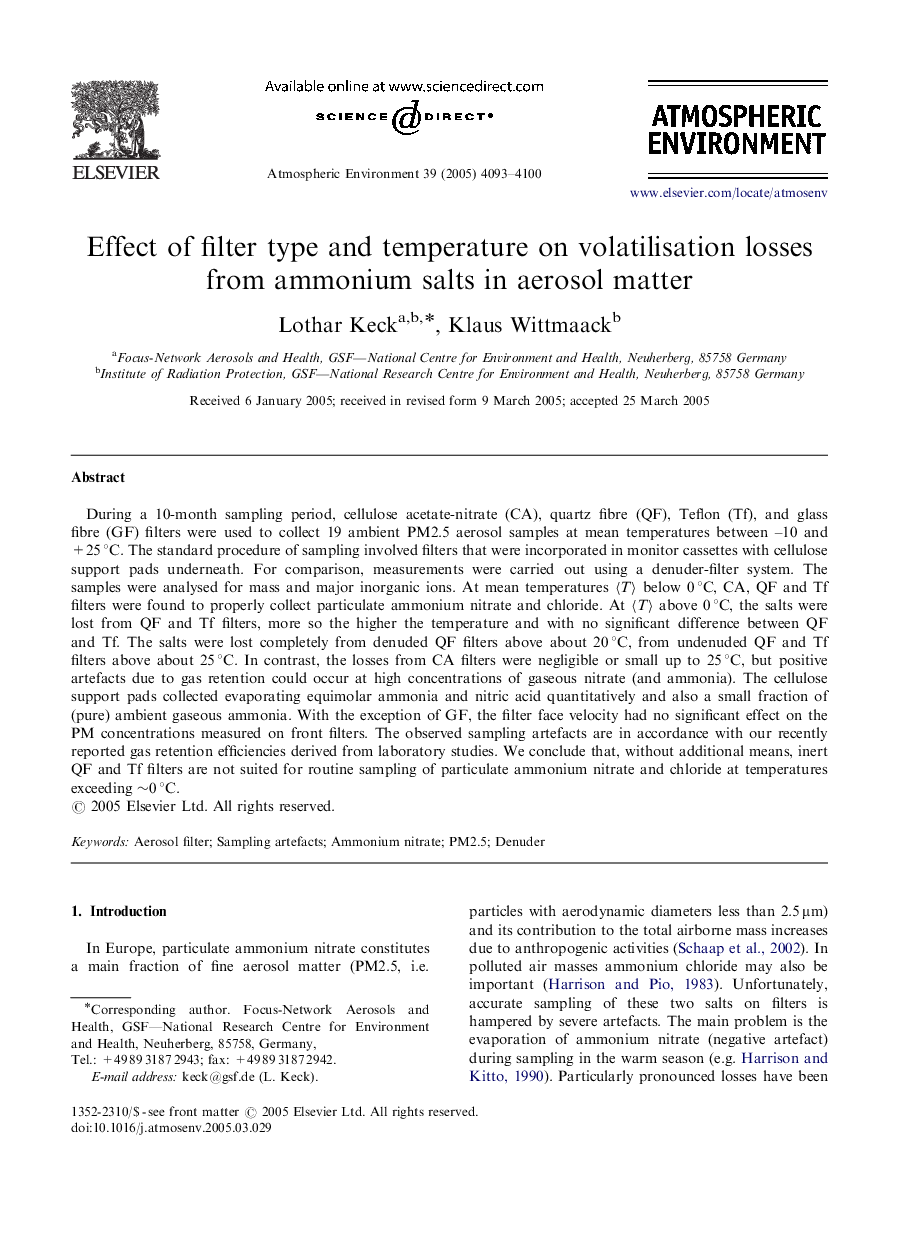| Article ID | Journal | Published Year | Pages | File Type |
|---|---|---|---|---|
| 4445292 | Atmospheric Environment | 2005 | 8 Pages |
During a 10-month sampling period, cellulose acetate-nitrate (CA), quartz fibre (QF), Teflon (Tf), and glass fibre (GF) filters were used to collect 19 ambient PM2.5 aerosol samples at mean temperatures between –10 and +25 °C. The standard procedure of sampling involved filters that were incorporated in monitor cassettes with cellulose support pads underneath. For comparison, measurements were carried out using a denuder-filter system. The samples were analysed for mass and major inorganic ions. At mean temperatures 〈T〉〈T〉 below 0 °C, CA, QF and Tf filters were found to properly collect particulate ammonium nitrate and chloride. At 〈T〉〈T〉 above 0 °C, the salts were lost from QF and Tf filters, more so the higher the temperature and with no significant difference between QF and Tf. The salts were lost completely from denuded QF filters above about 20 °C, from undenuded QF and Tf filters above about 25 °C. In contrast, the losses from CA filters were negligible or small up to 25 °C, but positive artefacts due to gas retention could occur at high concentrations of gaseous nitrate (and ammonia). The cellulose support pads collected evaporating equimolar ammonia and nitric acid quantitatively and also a small fraction of (pure) ambient gaseous ammonia. With the exception of GF, the filter face velocity had no significant effect on the PM concentrations measured on front filters. The observed sampling artefacts are in accordance with our recently reported gas retention efficiencies derived from laboratory studies. We conclude that, without additional means, inert QF and Tf filters are not suited for routine sampling of particulate ammonium nitrate and chloride at temperatures exceeding ∼0 °C.
